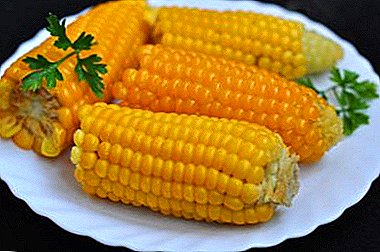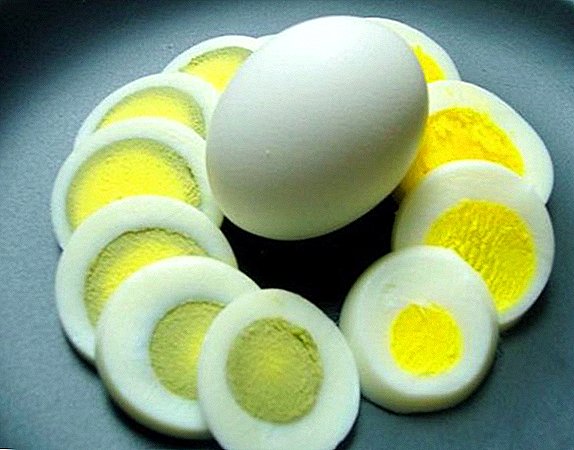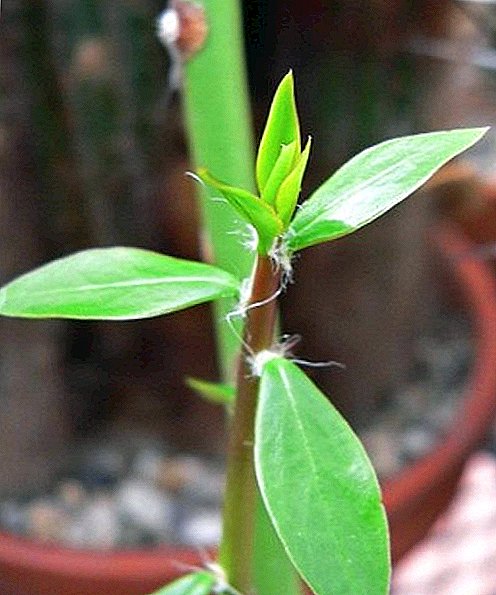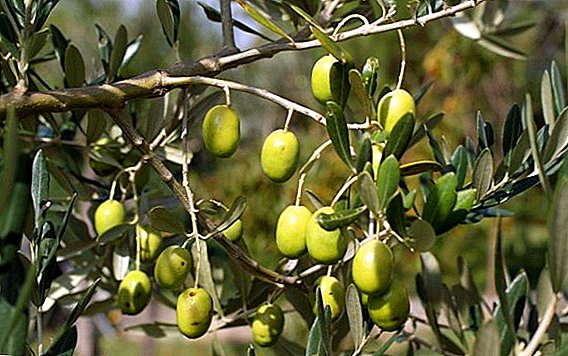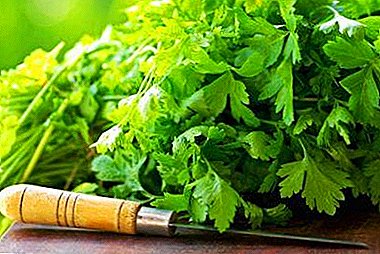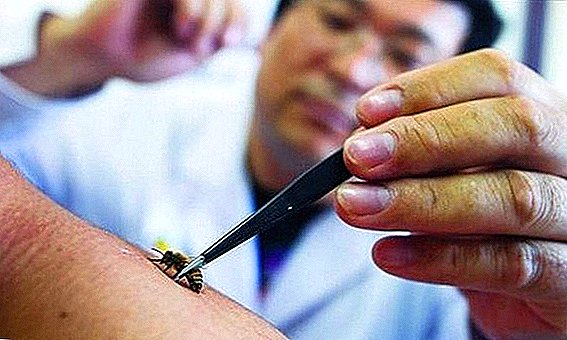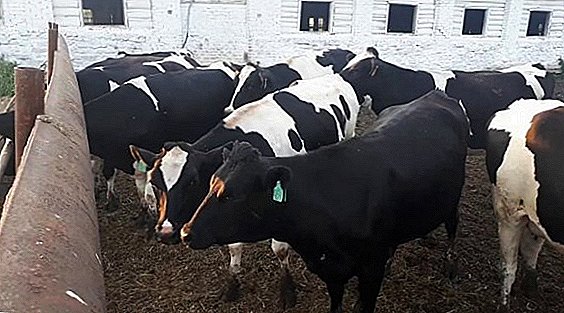 Modern technologies allow not only to optimize the farm, but also to reduce risks, as well as to increase efficiency. For some time, even at home, methods of artificial insemination of cows have been available to many, the main thing is to closely monitor the animal’s manifestations and have time to carry out the procedure at the most opportune moment.
Modern technologies allow not only to optimize the farm, but also to reduce risks, as well as to increase efficiency. For some time, even at home, methods of artificial insemination of cows have been available to many, the main thing is to closely monitor the animal’s manifestations and have time to carry out the procedure at the most opportune moment.
Benefits of artificial insemination
Any animal husbandry involves not only getting milk of high fat content, but also getting it in large quantities. For this, cows need at least once a year to acquire offspring. 
Artificial insemination in these circumstances has several advantages over natural:
- fertilization occurs guaranteed;
- the cow is not at risk of contracting brucellosis, vibriosis, or another infection;
- terms of delivery can be predicted;
- You can lay the necessary characteristics in future calves, giving them the seed from the best producers.
Did you know? In all her life, one cow gives on average about 200 thousand glasses of milk.
How to determine the readiness of a cow for mating
The cycle of sex life in a cow takes about 21 days and goes through the following stages:
- Stage of arousal.
- Stage braking.
- Stage balancing.
 The genitals swell and there is a lot of mucus. The current lasts a day, but in rare cases reaches a week. Then begins the sexual hunt, an important stage for artificial insemination. It begins within 24 hours from the start of estrus and lasts 30 hours. The behavioral signs are as follows:
The genitals swell and there is a lot of mucus. The current lasts a day, but in rare cases reaches a week. Then begins the sexual hunt, an important stage for artificial insemination. It begins within 24 hours from the start of estrus and lasts 30 hours. The behavioral signs are as follows:- a cow is immobile when covered with a bull or when imitating a cover of another cow;
- the animal licks the genitals of other cows or tends to lay its head on the backs of its companions.
Important! The more often you observe a cow, the higher the probability of correctly determining the appropriate time for fertilization. The optimal solution is to check the herd three times a day, paying particular attention to the animals during the walk.At this time, ovulation occurs - the cow is ready for artificial insemination. After this period is over, the behavior of the animal gradually returns to normal: the level of estrogen decreases, the craving decreases, and appetite returns (the stage of balance).
Learn how mating of horses, rabbits and sheep occurs.
Preparing a cow for insemination
The time from which the cow is ready to bear offspring is 10 months old. Sexual maturity depends on the breed, climate, food and conditions. The best time to start insemination is still the two-year age of heifers. In order for insemination to be successful, the cows must eat well and be kept in favorable conditions. It is necessary to give complete rest to those who have already undergone lactation in order to regain strength and health.  This period (between the last milking and calving) is called dry. After calving, the zealous host will also check if the cow has any complications after childbirth or any diseases. An important factor in the proper maintenance of the herd are regular walks, good ventilation of the barn. Skinny cows quickly stop hunting, and too well-fed poorly inseminated. Taking care of the queens is the main task of the farmer. When the animal has gained enough weight, not exhausted and not overfed, you can start insemination.
This period (between the last milking and calving) is called dry. After calving, the zealous host will also check if the cow has any complications after childbirth or any diseases. An important factor in the proper maintenance of the herd are regular walks, good ventilation of the barn. Skinny cows quickly stop hunting, and too well-fed poorly inseminated. Taking care of the queens is the main task of the farmer. When the animal has gained enough weight, not exhausted and not overfed, you can start insemination.
Did you know? It's amazing, but cows can cry.
Methods of artificial insemination of cattle
A cow is inseminated several times during a single hunt. The first time - as soon as the hunt is detected, the second time - in 10-12 hours. If after the second time the hunt has not stopped, the procedure is continued every 10-12 hours until it ends. Most of the cows ovulate at night, so if the hunt came in the evening, you can inseminate only once, in the evening. If the hunt began at night, the cows are inseminated in the morning.
Read also about how to properly trim cows and milked.Insemination is carried out in special rooms where the cow is lured quietly and without coercion (for example, by setting the feeder in advance in the room). Before starting the procedure, the genitals of the animal are thoroughly examined, then they must be washed and wiped dry. The technology of artificial insemination has several proven methods, we consider each of them in detail.
Video: artificial insemination technique
Rectocervical
Instruments:
- disposable gloves;
- single syringes (volume - 2 ml) or ampoules (48 mm long, material - polyethylene);
- polystyrene catheter (length - 40 cm).
The procedure for the rectocervical method is as follows:
- The individual is fixed, then the external genitals are thoroughly washed with furacilin solution.
- In a catheter from a bottle gain milliliter of semen.
- The gloved hand extends the labia so that they do not have contact with the catheter.
- With a free hand, a catheter is inserted into the vagina until it rests against it with a coupling connecting the catheter into an ampoule (syringe).
- The gloved hand is moistened with warm water and injected into the anus - this hand will regulate the movement of the catheter towards the vagina as needed.
- Next, the hand fixes the cervix so that the little finger directs the catheter into the canal.
- Slowly pressing on the vial (syringe), inject sperm.
- The hand is removed from the anus, the ampoule is disconnected, the catheter is carefully removed.
 To prevent the catheter from entering the urinary canal, it is gently pushed upward about 15 cm and then forward slightly upward (at an angle of 30 degrees). Further passage goes horizontally. An experienced specialist can direct the catheter so that it completely passes the cervical canal and the sperm enters directly into the uterine cavity.
To prevent the catheter from entering the urinary canal, it is gently pushed upward about 15 cm and then forward slightly upward (at an angle of 30 degrees). Further passage goes horizontally. An experienced specialist can direct the catheter so that it completely passes the cervical canal and the sperm enters directly into the uterine cavity.Important! Before carrying out the procedure, the animal must be reassured, and all manipulations should be done benevolently and painlessly.The method has undoubted advantages. First, an accurate entry into the cervical canal occurs due to fixation through the rectum. Secondly, the neck massage that occurs during the procedure increases the likelihood of rapid absorption of seminal fluid. This is the most accurate and productive method of artificial insemination, giving up to 90% of the result. He is also the fastest.
Check out the best breeds of dairy cows, and their main diseases, and learn how to buy the right cow and how to feed it.
Visocervical
Instruments:
- sterile gloves (length - 80 cm);
- vaginal speculum;
- special lighting device;
- sterile catheters (in the form of syringes);
- citric acid sodium salt solution (2.9%);
- soda solution (warm);
- alcohol solution (70%);
- wadded tampons.
Procedure during the procedure:
- The catheter is washed several times with the prepared solutions.
- Sperm is collected in the syringe, checking for air bubbles and removing them in a timely manner.
- One of the prepared tampons is burned, treating a sterile vaginal speculum with fire.
- The cow's vulva is treated with a disinfector.
- A mirror washed with soda solution is injected into the vagina until it rests against the walls.
- Then it is carefully opened and examined the cervix.
- After inspection, the mirror is covered and the catheter with seminal fluid is introduced into the cervical canal (approximately 5-6 cm).
- The contents are slowly squeezed out of the syringe.
- The instrument is removed, while keeping the mirror slightly open (to avoid injury to the mucous membranes).
 The last point results in the main drawback of the procedure - if the specialist is not sufficiently experienced, there is a risk of injury to the vagina of the cow by a mirror.
The last point results in the main drawback of the procedure - if the specialist is not sufficiently experienced, there is a risk of injury to the vagina of the cow by a mirror.Manocervical
Instruments:
- disposable rubber gloves (length - 80 cm);
- sterile containers for seminal fluid (ampoules);
- sterile catheters 75x4.8 mm.
The procedure is as follows:
- The animal's vulva is washed with water and treated with an antibacterial solution (furatsilina tablet, diluted with alcohol in the desired proportion).
- The gloved hand is moistened with a warm, 9% saline solution.
- The treated hand is carefully checked for dilation of the cervix.
- If the disclosure allows you to continue, then you should first massage the vagina for a few minutes.
- With your free hand, you need to take the catheter, to which the ampoule is already attached, insert it into the vagina and gently push it 2 cm into the cervical canal with your finger.
- Little by little, accompanying the procedure with massage movements, move the ampoule until the catheter moves another 5-6 cm.
- The vial is slightly raised and gradually squeezes its contents.
- At the end of the procedure, the instruments, without unclamping, are carefully removed first into the vagina and then out.
 It is very important to perform all actions calmly, minimizing the pain for the animal. If the cow is disturbed too much, its uterus will begin to contract strongly and push the contents back, zeroing the entire result.
It is very important to perform all actions calmly, minimizing the pain for the animal. If the cow is disturbed too much, its uterus will begin to contract strongly and push the contents back, zeroing the entire result.Important! The contents of the ampoule are squeezed out during the period of relaxation of the cervix, so that the uterus sucks sperm. If the uterus does not contract, you can stimulate this process by moving the catheter.The lack of a monocervical method can be attributed to the high risk of infection penetration during the procedure, if the preparation algorithm was violated. The method is also not suitable for calves and young cows because of their narrow pelvis. Needless to say, such a procedure requires the inseminator to have specialized knowledge of the anatomy and physiology of the cow.
Epitervical
Instruments:
- disposable gloves (length - 80 cm);
- vial for sperm;
- polyethylene catheter (length - 40 cm).
 Procedure:
Procedure:- The anus is freed from feces to eliminate pressure on the walls of the uterus.
- The genitals are disinfected with furatsilina solution.
- Perform a massage of the clitoris for the occurrence of arousal.
- Next, a gloved hand is inserted into the anus and through it is stimulated by the uterus with massage movements.
- A catheter, previously connected to the vial (with seminal fluid), is inserted into the vagina and its contents are squeezed out gradually.
- After the procedure, the hand is pulled out of the anus, and the instrument is gently removed.
We get acquainted with the features of breeding and maintenance of dwarf and meat cows.
Care for a cow after insemination
The date of insemination must be recorded, as the expected date of calving will start counting from it. If a month after insemination the cow does not enter the state of hunting, you can be sure that she became pregnant, that is, she became pregnant. There is a more accurate way: on the 20th day to do a blood test, determining the level of progesterone. The pregnant cow gradually gains weight, the milk yield decreases. Pregnancy lasts 9 months. Two months before calving, the cow is started, that is, it is no longer milked.  This can be done immediately, but gradually, within ten days. The latter method is used mainly in relation to animals with high performance. At the same time, reduce the level of feed intake, and juicy food does not give at all. The moment of launch is extremely important, during this period it is necessary to carefully examine the udder and monitor the general condition of the cow. 3-5 days after the launch, you can return to the animal a full diet.
This can be done immediately, but gradually, within ten days. The latter method is used mainly in relation to animals with high performance. At the same time, reduce the level of feed intake, and juicy food does not give at all. The moment of launch is extremely important, during this period it is necessary to carefully examine the udder and monitor the general condition of the cow. 3-5 days after the launch, you can return to the animal a full diet.
Frequent newbie mistakes
Artificial insemination requires some skill and skill. But there are certain mistakes that newcomers should take into account so as not to let them go:
- improper nutrition and maintenance of the animal;
- rough handling;
- the desire to finish as soon as possible to the detriment of the cow's well-being;
- neglect of basic hygiene;
- non-compliance with safety regulations;
- inattention to the health of the fertilized individual;
- insufficient study of signs of readiness for fertilization;
- improper storage of seminal fluid.
 For owners of small dairy farms, artificial insemination is the best way out because it allows a less costly and more productive way to affect the performance of cows and the quality of their offspring. Trust the specialist inseminator or carry out the procedure yourself - you decide. The main thing to remember is that the health and safety of the animal is always a priority, no matter what goal you set.
For owners of small dairy farms, artificial insemination is the best way out because it allows a less costly and more productive way to affect the performance of cows and the quality of their offspring. Trust the specialist inseminator or carry out the procedure yourself - you decide. The main thing to remember is that the health and safety of the animal is always a priority, no matter what goal you set.Reviews





